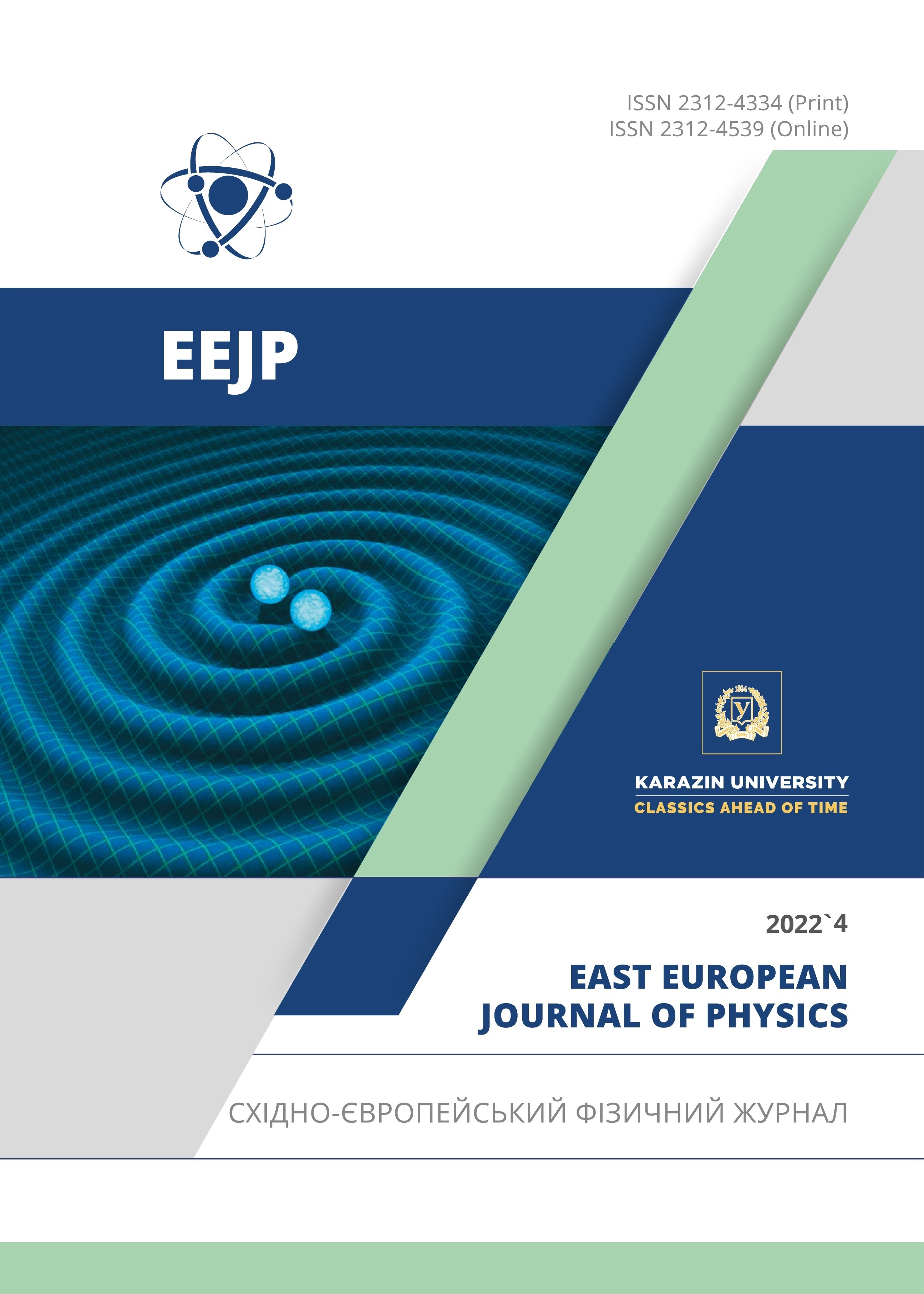Study of CIGS Pseudo-Homojunction Thin Film Solar Cell using SCAPS-1D
Abstract
The present modelling study reports the performance of defected CIGS pseudo-homojunction thin film solar cell (P-HTFSC) and determines its optimum parameters for high performance using the Scaps-1D software under the AM1.5 illumination and the operating temperature of 300 K. To focus the discussion on the optimal parameters (thickness, doping concentrations, deep/interface defect concentrations and bandgap) for the ZnO, CdS, ODC and CIGS thin film layers, cross sectional (1D) simulations have been performed on the ZnO/CdS/ODC/CIGS P-HTFSC device for obtaining its optimal structure that confers high light-into-electricity conversion efficiency. The four light J-V characteristics (short-circuit current: JSC, open-circuit voltage: VOC, fill factor: FF and conversion efficiency: ) have been used as indicators to evaluate the device performances. Simulation outcomes have proved that for a best performance for CIGS P-HTFSC device, the optimal thickness for CIGS and ODC layers should be small than 2 µm and few nm, respectively, while the optimal defect concentration within the layer should be 1013 cm-3 and between 1013 cm-3-1018 cm-3, respectively.
Downloads
References
S.R. Kodigala, Chapter 5 - Optical Properties of I–III–VI2 Compounds, Thin Films and Nanostructures, 35, 195 (2010). https://doi.org/10.1016/B978-0-12-373697-0.00005-5
N. Khoshsirat, and N.A.M. Yunus, in: Nanoelectronics and Materials Development, edited by K. Abhijit, (InTechOpen, 2016), pp. 41-65.
M.A. Green, E.D. Dunlop, J. Hohl-Ebinger, M. Yoshita, N. Kopidakis, and X.J. Hao, “Solar cell efficiency tables (Version 59)”, Prog. Photovolt. Res. Appl. 30, 3 (2022). http://dx.doi.org/10.1002/pip.3506
L.A. Kosyachenko, in: Solar Cells: New Approaches and Reviews, edited by J. Fagerberg, D.C. Mowery, and R.R. Nelson, (IntechOpen, 2015). https://doi.org/10.5772/58490
I. Bouchama, S. Boudour, N. Bouarissa, and Z. Rouabah, “Quantum and conversion efficiencies optimization of superstrate CIGS thin-films solar cells using In2Se3 buffer layer”, Optical Materials, 72, 177 (2017). http://dx.doi.org/10.1016/j.optmat.2017.05.056
A. Bakoura, A. Saadoune, I. Bouchama, F. Dhiabi, S. Boudour, and M.A. Saeede, “Effect and optimization of ZnO layer on the performance of GaInP/GaAs tandem solar cell”, Micro and Nanostructures, 168, 207294 (2022). https://doi.org/10.1016/j.micrna.2022.207294
M. Burgelman, K. Decock, A. Niemegeers, J. Verschraegen, and S. Degrave, SCAPS manual, Version 2021, (University of Gent, Belgium).
Y. Osman, M. Fedawy, M. Abaza, M.H. Aly, “Optimized CIGS based solar cell towardsan efficient solar cell: impact of layers thickness and doping”, Optical and Quantum Electronics, 53, 245 (2021). https://doi.org/10.1007/s11082-021-02873-4
J.W. Lee, J.D. Cohen, and W.N. Shafarman, “The determination of carrier mobilities in CIGS photovoltaic devices using high-frequency admittance measurements”, Thin Solid Films, 480, 336 (2005). https://doi.org/10.1016/j.tsf.2004.11.087
Ö.F. Yüksel, B.M. Başol, H. Şafak, and H. Karabiyik, “Optical characterisation of CuInSe2 thin films prepared by two-stage process”, Appl. Phys. A, 73, 387 (2001). https://doi.org/10.1007/s003390100744
J.R. Lakowicz, I. Gryczynski, Z. Gryczynski, and C.J. Murphy, “Luminescence Spectral Properties of CdS Nanoparticles”, J. Phys. Chem. B. 103(36), 7613 (1999). https://doi.org/10.1021/jp991469n
S. Emin, S. P. Singh, L. Han, N. Satoh, and A. Islam, “Colloidal quantum dot solar cells”, Sol. Energy, 85, 1264 (2011). https://doi.org/10.1016/j.solener.2011.02.005
Copyright (c) 2022 Samah Boudour, Idris Bouchama, Samiha Laidoudi, Walid Bedjaoui, Leila Lamiri, Ouafia Belgherbi, Siham Aziez

This work is licensed under a Creative Commons Attribution 4.0 International License.
Authors who publish with this journal agree to the following terms:
- Authors retain copyright and grant the journal right of first publication with the work simultaneously licensed under a Creative Commons Attribution License that allows others to share the work with an acknowledgment of the work's authorship and initial publication in this journal.
- Authors are able to enter into separate, additional contractual arrangements for the non-exclusive distribution of the journal's published version of the work (e.g., post it to an institutional repository or publish it in a book), with an acknowledgment of its initial publication in this journal.
- Authors are permitted and encouraged to post their work online (e.g., in institutional repositories or on their website) prior to and during the submission process, as it can lead to productive exchanges, as well as earlier and greater citation of published work (See The Effect of Open Access).








